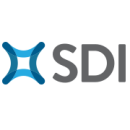Trust takes time to build, but can be lost in an instant. Company leaders know this, yet recent surveys show that company trust may not be as prevalent among employees as many leaders believe.
According to a 2023 PwC survey, 79 percent of business executives said their employees trusted the company. However, only 65 percent of employees agreed.
In another survey conducted by Visier, team members shared the top reasons they trust their leaders. Ranked highest were honesty, transparency about company policies and practices, fair wages and an intolerance of toxic behavior.
Creating a culture of trust can pay dividends — not only in providing a healthy work environment and strong employee experience but also in the business’s overall performance. Recent Deloitte data showed that trusted companies outperform their competitors by up to 400 percent.
At Chicago-based IT consultancy and managed services provider SDI Presence, team leaders are investing in creating a high-trust culture through close collaboration, mutual support and avoiding the common pitfalls that erode trustworthiness.
By prioritizing this, high trust translates into high-performing teams that lean on each other’s strengths.
For over two decades, SDI Presence has provided strategic managed services, IT consulting, and hybrid multicloud infrastructure solutions to optimize their clients’ technology environments.
Describe the culture on your team. How do you know that you have a high-trust culture?
The marketing team at SDI is small but mighty, which is why we rely on our highly collaborative team culture. I’m confident in saying we have a high-trust culture among the team because of how much we’re able to accomplish and the high standards to which we adhere. The amount of high-quality work we produce in-house within our tight deadlines showcases how well we play to each others’ strengths — having a team that complements each other is ideal, and we’re always learning from one another.
What are some practices you have implemented to build trust on your team?
It sounds rather basic, but our weekly Monday morning team meeting helps — it’s a time for us to check in, reset from the previous week and ensure we’re all on the same page for the coming week. In a growing organization, every single day matters, and as a partner in the business’ growth, we don’t have a second to waste — each week we need to maximize our time spent. This team meeting ensures issues are discussed and we’re good to execute our plan.
We also try to make time on a monthly basis to sit with each other and creatively brainstorm how we can innovate as a team. AI is developing so quickly that there are regularly new tools we can evaluate for our use. From AI for content to images, the marketing team strives to work smarter, together. This team mindset really helps us collaborate well, which organically fosters trust. We definitely have each other’s backs.
This team mindset really helps us collaborate well, which organically fosters trust. We definitely have each others’ backs.”
In your opinion, what destroys trust on a team? What should leaders avoid doing?
There’s a quote that floats into my LinkedIn newsfeed every so often, and it centers around the idea that nothing is more damaging to a high-performing team than seeing a leader tolerate a bad employee. This is something I’ve experienced as a team member in the past. As my career progressed, I promised myself that I wouldn’t back down from difficult conversations when I was a leader. A weak link among the team can quickly destroy trust; don’t let a bad apple spoil the bunch.









